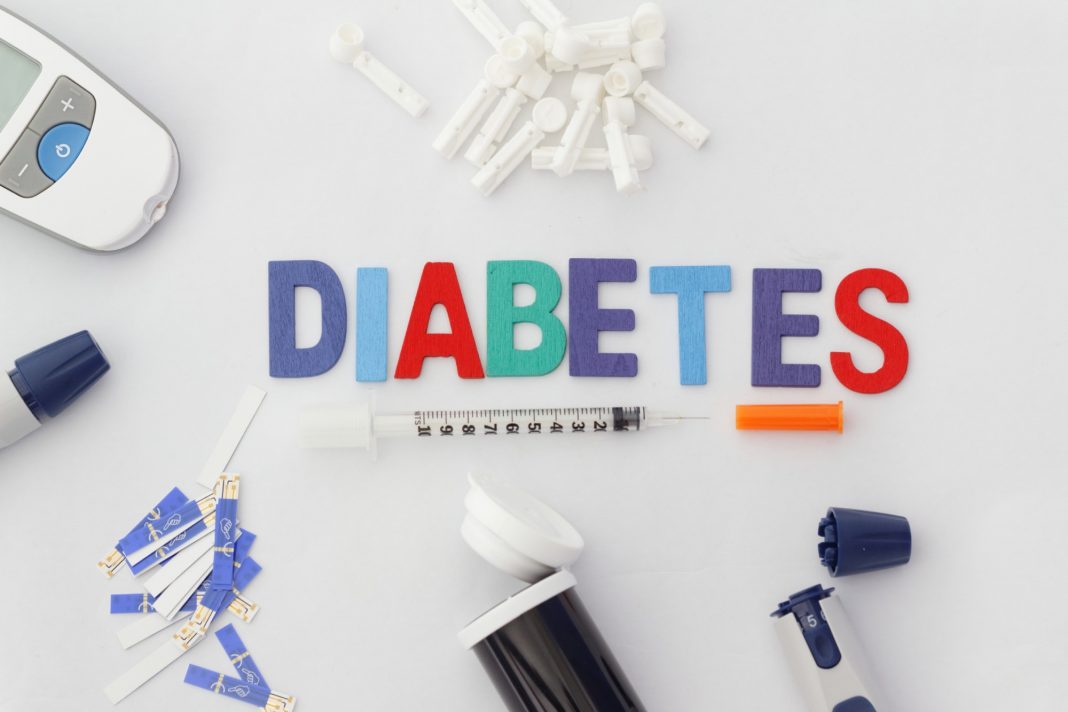Prevalence rates for one of Australia’s most common chronic conditions, type 2 diabetes (T2D), continue to grow. The pharmacy is a helpful and accessible place for those with the disease to seek advice and information. Pharmacy assistants can help customers by staying up to date on the causes, management and treatment of T2D and encouraging checks for diabetes-related risk factors.
By 2025, up to three million Australians will have diabetes, according to the Baker IDI Heart and Diabetes Institute in Melbourne.1 As T2D continues to grow within Australia, large numbers of people with the disease are estimated to be undiagnosed.
Almost 1.2 million Australians were living with T2D in 2020. Prevalence rates increased by age, with 40 per cent of cases occurring in those aged 65 and older. The greatest prevalence was in males aged 80-84, accounting for 22 per cent of T2D cases, and in females aged 80-84, accounting for 17 per cent.2
Diabetes Victoria has warned in a media release this year that as diabetes prevalence rates continue to grow at a concerning rate, for many people who have developed the disease but don’t know it, it can take several years for them to be diagnosed – a long time in which the untreated condition can create significant and often irreversible damage in the body. This is known as ‘silent diabetes’.3
“We know almost 32,000 Victorians were diagnosed with diabetes in the last year alone, so we expect to bypass the 400,000 mark later this year,” Diabetes Victoria CEO Glen Noonan said.
“This is such a significant number of people who are living every day, 24 hours a day, with this complex condition.
The ‘silent diabetes’ issue means that the estimated prevalence figure for diabetes in the Victorian community is much higher than officially quoted, he adds.
Diabetes Victoria urges health professionals and organisations to work together to secure a brighter future for those living with the disease.
“We want to see a world where breakthroughs in new treatments and care are made available to all people regardless of their socio-economic status,” Mr Noonan said.
“I’m convinced that to achieve this requires a massive step change in many aspects, including how diabetes is understood, how it’s funded by government and industry, and how diabetes care is provided within the health system.
“With all the challenges and the complexity of living in our community and the growing prevalence of diabetes, it will take the entire diabetes community and all the skills and capabilities to come together. No one group alone can solve this.”
What is T2D?
According to Diabetes Australia, type 2 diabetes occurs when the body becomes resistant to the normal effects of insulin and gradually loses the capacity to produce adequate insulin in the pancreas. The condition has genetic and family history risk factors and is often associated with modifiable lifestyle factors, meaning people can slow and even stop the condition’s progression through changes to diet and exercise.4
T2D risk factors
Risk factors for T2D are characterised as modifiable (those that can be changed) and non-modifiable (those that cannot be changed).5
Non-modifiable risk factors include:
- Age (people over 40).
- Family history of diabetes.
- Ethnicity and cultural background (those of Aboriginal and Torres Strait Islander, Pacific island, Indian sub-continent, and Chinese cultural background are at greater risk).
- History of gestational diabetes or polycystic ovarian syndrome.
Modifiable risk factors:
- Carrying excess weight (especially around the middle).
- Being physically inactive.
- Unhealthy eating habits.
- Smoking.
- High blood pressure.
- High levels of cholesterol.
Given these modifiable risk factors, people can reduce their risk of diabetes by maintaining a healthy weight, eating a healthy and balanced diet, and incorporating regular physical activity by moving for at least 30 minutes a day, says Diabetes Australia.
Silent diabetes
Undiagnosed T2D can have significant health implications, which is why those with diabetes risk factors should be monitoring their health closely and speaking to their doctor.
Back in 2017, then Diabetes Australia CEO Professor Greg Johnson stated in a media release: “It’s about time we detected silent undiagnosed type 2 diabetes. Many people have type 2 diabetes for up to seven years before being diagnosed, and during that time, up to half begin to develop a diabetes-related complication.6
“The tragedy is that much of the damage to the body that causes diabetes-related complications, like vision loss, kidney damage, heart attack, stroke and limb amputation, is preventable.”
He cited AUSDRISK as a free online risk assessment tool that people can use to determine their risk of T2D but added that despite an estimated 60 per cent-plus of Australians having T2D risk factors, research showed that only five per cent of those aged over 40 had undertaken risk assessment with the tool in the previous two years.
Retail pharmacy assistants should encourage those with diabetes risk factors to take the AUSDRISK assessment and to speak to their GP if concerned. Early detection and diabetes management are key to preventing diabetes-related complications.
T2D symptoms
Common symptoms of type 2 diabetes include:
- Increased thirst.
- Increased urination, particularly at night.
- Feeling tired and lethargic.
- Constant hunger.
- Slow healing of skin sores.
- Itching skin and skin infections.
- Blurred vision.
T2D symptoms may not be obvious, and some people with the disease may have no symptoms at all. Tiredness, lethargy, thirst and blurred vision can often be put down to the usual daily stresses, age, or general wear and tear. This is why it’s important to encourage those that present with diabetes-related risk factors or symptoms to seek advice from their doctor.
T2D impact
Complications affecting the feet, kidneys and cardiovascular health are among the common issues associated with T2D. Cardiovascular disease (CVD) accounts for most deaths of those with T2D, with about 65 per cent of CVD deaths occurring in those with diabetes and prediabetes.1
According to the Heart Foundation, high blood sugar levels from diabetes can damage the blood vessels in the heart, making fatty deposits more likely. Having diabetes also increases the risk of other health issues, such as hypertension (or high blood pressure), high cholesterol and being overweight, which has an impact on heart health.7
According to Dr Amanda Buttery, Head of Clinical Evidence at the Heart Foundation, for those living with diabetes, management of the disease is essential to prevent heart attack and stroke. She adds that a GP can refer patients to a credentialled diabetes educator if they need more support.
Getting a regular heart health check is important for all people, but especially for those living with diabetes, due to the increased risk of CVD. So, it’s essential for those with diabetes to be informed about their heart health. Pharmacy assistants can encourage those living with the disease to have their blood pressure monitored at the pharmacy and to seek a heart health check at their GP.
Mental health challenges
Diabetes Australia’s ‘Heads up on Diabetes’ report, coinciding with National Diabetes Week 2022, highlighted that people living with the disease consistently face stigma that contributes to adverse mental health impacts, including anxiety and depression.8
“Research tells us that four out of five people living with diabetes have experienced feeling stigmatised because of their diabetes, at some time,” said the CEO of Diabetes NSW, ACT and Qld, Sturt Eastwood, who lives with type 1 diabetes, referring to the report.
The ‘Heads Up’ report included that people living with T2D cited stigma that indicated it was perceived as a lifestyle disease, with 52 per cent of respondents saying people assumed they were overweight or had been previously, and 37 per cent saying they felt judged for their food choices.
When communicating with those living with diabetes and talking to people about diabetes, it’s important to keep such findings in mind. Living with diabetes isn’t easy. Nobody chooses diabetes, and nobody should feel judged or shamed.
T2D remission
New research has demonstrated that some people with T2D can reduce their blood glucose levels for a sustained period. Remission has been shown to be more successful in people who’ve had T2D for less than five years. Despite this, evidence shows that in many of those that achieve remission, a gradual return of previous blood glucose levels is experienced.9
Remission has been achieved following an intensive dietary change or bariatric surgery. It’s important to note that not all those with T2D will be suitable candidates for remission, which should be pursued in consultation with a diabetes healthcare team.
References Baker IDI Heart and Diabetes Institute. ‘Diabetes: the silent pandemic and its impact on Australia’, 2012. edu.au/-/media/documents/impact/diabetes-the-silent-pandemic.pdf.
- Australian Institute of Health and Welfare. ‘Diabetes: Australian Facts’, 2023. gov.au/reports/diabetes/diabetes/contents/how-common-is-diabetes/type-2-diabetes.
- Diabetes Victoria. Media release, 2023. s3-ap-southeast-2.amazonaws.com/dv-resources/OrchestraCMS/a1f0o00000G693sAAB.pdf.
- Diabetes Australia. ‘Type two diabetes’, 2023. com.au/about-diabetes/type-2-diabetes/
- Diabetes Australia. ‘Type 2 diabetes risk factors’, 2023. com.au/diabetes-risk/.
- Diabetes Australia. Media release, 2017. com.au/mediarelease/its-about-time-we-detected-silent-undiagnosed-type-2-diabetes/.
- Heart Foundation. ‘Diabetes and heart disease’, 2023. org.au/Bundles/Your-heart/Diabetes-and-heart-disease.
- Diabetes Australia. ‘Heads up on diabetes’, 2022. com.au/
- Diabetes Australia. ‘Type 2 diabetes remission’, 2021. com.au/wp-content/uploads/2021_Diabetes-Australia-Position-Statement_Type-2-diabetes-remission_2.pdf.
This feature was originally published in the April issue of Retail Pharmacy Assistants e-magazine.






